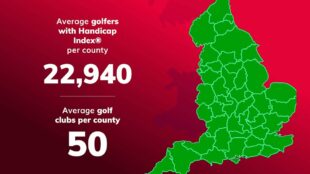The following information, documents, notices and signs (in no particular order) are currently required to be displayed at places of business within the UK. Obviously, there may be some requirements that are not applicable to your club such as CCTV, Tobacco Vending or the Companies Act and the list is not exhaustive with your Local Authority perhaps having additional requirements.
The Companies (Trading Disclosures) Regulations 2008
Every company must display a sign with its registered name at:
- its registered office;
- any inspection place, namely, where a company keeps available for inspection any company records which it is required under the Companies Acts to keep available for inspection;
- at any location at which it carried on business (unless it is primarily used for living accommodation).
You must display a sign with your company name:
- in characters that can be read with the naked eye;
- in such a way that visitors to that office, place or location may easily see it;
- so that it can be seen at any time, i.e. not only during business hours;
- continuously, but if the location is shared by six or more companies, each such company is only required to display its registered name for at least fifteen continuous seconds at least once in every three minutes.
Data Protection Act 1998 and Information Commissioner’s Office
You must let people know that they are in an area where CCTV surveillance is being carried out. Signs should:
- be visible and readable by members of the public;
- contain details of the organisation operating the system, the purpose for using CCTV and who to contact about the scheme (where these things are not obvious); and
- be an appropriate size according to the circumstances.
Health and Safety at Work etc Act 1974
You must display the HSE Health and Safety Law Poster (2009 Revision) in a prominent position in each workplace or to provide each worker with a copy of the approved leaflet.
A Health and Safety Policy statement sets out how a Company manages health and safety within their workplace. It demonstrates the organisation’s attitude towards health and safety and the steps, arrangements and systems the company has in place to ensure compliance with health and safety legislation. The health and safety policy statement should be displayed in a prominent position where employees can easily read it.
The Health and Safety (First-Aid) Regulations 1981
Signs are required to inform your employees of first aid provision. You should indicate who the first aiders are, clearly identify the location of first aid boxes, first aid room or station and equipment such as eye wash stations or emergency showers.
Employers’ Liability (Compulsory Insurance) Act 1969
The Employers’ Liability Insurance Certificate must state clearly the minimum level of cover provided and the companies covered by the policy. You must display a copy of the certificate of insurance where your employees can easily read it. Since 1 October 2008, you have been allowed to display the certificate electronically. If you choose this method, you need to ensure your employees know how and where to find the certificate and have reasonable access to it.
Licensing Act 2003
The Club Premises Certificate or Premises Licence summary (or a certified copy) must be prominently displayed at or on the premises concerned – every page should be displayed.
The Premises Licence Holder must display a notice at the premises specifying the position held at the premises by the person nominated to keep the Premises Licence or a certified copy under their control. If you have a Club Premises Certificate this is not applicable.
As a result of the mandatory conditions on all Premises Certificates or Licences amended in October 2014, the following drinks if sold or supplied on the premises must be available in the following measures:
- beer or cider – half pint
- gin, rum, vodka or whisky – 25ml or 35ml (it is not permitted to have 25 and 35 ml on the same premises)
- still wine in a glass – 125ml
As well as making the drinks available in the above measures, customers must be made aware of the availability of these measures – for example, by making their availability clear on menus and price lists, and ensuring that these are displayed in a prominent place in the relevant premises (e.g. at the bar).
If a customer does not indicate the size of a measure they require then they must be made aware of the measures available. This can be by reference to the menu or price list which may be on a notice at the bar.
The above condition does not apply if the drinks in question are sold or supplied having been made up in advance ready for sale or supply in a securely closed container.
You should also review your Premises Certificate or Licence conditions to ensure compliance with any specific local authority conditions relating to the display of additional notices. i.e. gaming, entertainment, noise etc.
Weights and Measures Act 1985
If you sell wine by the glass in 125 ml, 175 ml and 250 ml measures, the measures offered for sale must be indicated in a written notice visible to customers before they order or in the menu and wine list if separate.
It is only necessary to display the price, in a clear legible notice, of one measure of wine by the glass if the others offered for sale are proportionate in price, or to display the price of any that are not proportionate. However, please note the requirements under the mandatory conditions to make customers aware of the availability of 125ml measures.
You must only sell drinks in approved measures. These are:
- pints, half pints (or half pint multiples) and the rarely used third of a pint for draught beer, lager and cider;
- multiples of 25 millilitres or 35 millilitres for gin, rum, whisky and vodka except when they’re served as part of a cocktail;
- 125 millilitres or 175 millilitres for glasses of wine or multiples thereof;
- 250 millilitres for carafes of wine;
Unless the volume of alcohol is in a pre-packaged sealed container ie wine in single volume bottles of 187ml
You must use officially stamped measures, metering equipment or glasses. For example, beer can be served using metered pumps or in stamped glasses.
Food Labelling Regulations 1996
A declaration of the alcohol by volume (ABV) is necessary, as part of the name of alcohol, in order to indicate the true nature and distinguish one type of alcoholic drink from another.
Under the Food Labelling Regulations 1996 for example, the name of one beer is, in essence, the same as another without a declaration of ABV. A brand name may not legally be substituted for the name of a food so whilst customers might tell one beer from another by the brand name, this is not sufficient for the Regulations.
The usual ways to make the declaration are either to mark the ABV alongside the particular alcoholic drink on the price list or mark the pump.
In the case of pre-packed alcoholic drinks, every drink with an alcoholic strength by volume of more than 1.2% must be marked or labelled with its alcoholic strength by volume.
The Consumer Protection from Unfair Trading Regulations 2008
The law on this was changed a few years ago with the introduction of The Consumer Protection from Unfair Trading Regulations 2008. This resulted in the repeal of the Price Marking (Food and Drink Services) Order, which specifically covered price lists and their display.
There is now a general obligation to give sufficient information to customers at the point of sale so that they are not misled on prices. This is far less specific than before, so, for example, trading standards cannot invoke any legislation saying exactly where the price list should be. They can, however, suggest that you are not giving enough information or the price list is not prominent enough.
Therefore, it is best practice to follow the same obligations as under the old Price Marking Order:
If up to 30 brands of alcohol, other than wine, are available then prices for all must be displayed.
If more than 30 brands of alcohol, other than wine, prices of at least 30 must be displayed.
The prices of at least five soft drinks – if this number is available – must be indicated. It should be noted that the five soft drink prices form part of the total number of prices required to be displayed under the above bullet points and are not additional to it.
If wine is sold for consumption with food (but not when merely sold among other drinks), the price of at least five wines – if this number is available – must be displayed. It should be noted that this is additional to the prices of other foods required to be displayed.
Menus and price lists must include all material information required by an average consumer to make an informed choice- such as the name/ brand/strength/ price of drinks along with the operator’s name and the name of the establishment which are generally given on the menus/price lists. Prices must include VAT. It must also be made clear if you have a compulsory service charge, a cover charge or a minimum charge.
Therefore, providing the nature of spirits in a manner which is unclear or failing to provide the price in a timely fashion before a transactional decision is made may amount to a misleading omission. For example, the prices of the drink available should be given to consumers before they order.
How or where you display the information required above is not prescribed but it should be clear and easily readable by the average consumer. When the information is provided, it is important to enable a consumer to make an informed decision before they are committed to a purchase. Bars should show the price list at the bar where orders are taken. In cafes and restaurants, the prices can be marked in menus or price lists. So that consumers are informed from the outset, prices should be displayed in your window or the entrance to your premises
The price of accommodation: Any additional charges on the prices shown for accommodation must be shown. Any misleading action or omission is an offence.
To fail to show all or part of the information necessary, or to provide misleading information, may be regarded as an unfair trading practice and constitute an offence.
Children and Young Persons (Protection from Tobacco) Act 1991 as amended and The Protection from Tobacco (Sales from Vending Machines) (England) Regulations 2010
A warning notice must be displayed in a prominent position, which is clearly visible to anyone purchasing cigarettes, at every retail premise at which tobacco is sold. It must not be less than 297mm x 420mm (A3 size), with characters no less than 36mm high stating: ‘IT IS ILLEGAL TO SELL TOBACCO PRODUCTS TO ANYONE UNDER THE AGE OF 18’
The Smoke-Free (Signs) Regulations 2012
You must display a no smoking sign at each public entrance to your workplace. There are signs for England, Scotland and Wales. Supplementary signs can be placed internally.
Every business vehicle that has shared use must display a no smoking symbol.
It must be legible but the size and design are a matter for the premises.
The Regulatory Reform (Fire Safety) Order 2005
Fire exit signs should be positioned to indicate exit routes, at least one sign must be visible from any place within the building. Fire exit signs must include a running man symbol. Fire Exit signs are available in both European Style and British standard style. It is best to use one or the other style but do not mix them.
Check that all Fire Exit doors have a sign explaining the opening method i.e. Push Bar to Open. Fire Doors must have a sign explaining that they should be kept shut. Fire Escape doors must be kept clear on the outside as well as the inside. Upon exiting the building the Assembly point or points should be signed.
Emergency escape routes must be kept clear of obstructions and be clearly marked throughout the whole route by signage.
The location of all fire fighting equipment should be clearly marked with a sign. This includes fire extinguishers, fire blankets and call points. All fire extinguishers must have the correct sign identifying the type of fire they can be used on.
It is good practice to display your Fire Safety & Evacuation plans. Is the fire action procedure clear?
Food Hygiene Rating Scheme
It is also good practice to display your food hygiene certificate however it is not (at present) a legal requirement.
PRS and PPL Licence
With your PRS and PPL licence, there is no legal requirement to display the licence at the premises but it is advisable.
By GCMA



